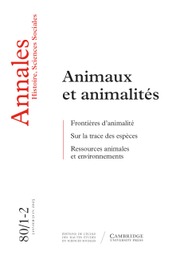Article contents
Les angles de l'Inde
Published online by Cambridge University Press: 26 July 2017
Extract
S'il est vrai que l'identité des civilisations reste liée dans une large mesure à une problématique des origines, les perspectives d'analyse que mobilisent à son propos les disciplines dominantes des sciences de l'Homme et de la Société sont encore loin du bel unisson rêvé par leurs protagonistes. D'Alembert, dans son discours préliminaire à la Grande Encyclopédie, marquait déjà la discordance, classant les premières dans la philosophie et les secondes dans l'histoire. La distinction de deux domaines au sein d'un même intitulé continue aujourd'hui d'en porter témoignage. A la paléontologie et à la préhistoire s'opposerait alors la sociologie. Celle-ci, partie de la multiplicité et de l'observation les découperait pour constituer des typologies et remonter ensuite jusqu'à des formes élémentaires. Celles-là, guidées par des échantillons directeurs exhumeraient de leurs chantiers de fouilles les traces interrompues du passé, reconstruisant les itinéraires et les empreintes d'une humanité initiale pour laisser à l'archéologie et à l'histoire le soin d'établir les liens avec des périodes moins reculées dont les trajets recoupent rarement ceux qu'elles avaient relevés.
Summary
This article's backdrop is India's civilization and contemporary situation, as well as the present state of Indian Studies. It takes up facts considered peripheral by various disciplines, and combines an ethnology of history with a history of ethnology in a critical approach. The following five points are developed : 1. In trying to understand religions and castes, Western orientalists and nineteenth century evolutionist rationalists viewed India as an object constructed with motives and categories foreign to Indian self-representations. 2. The relationship between Brahman thought and Hindu society reveals internal transformation within certain limits. 3. The complex interactions between “castes” and “tribes” legitimate a thorough reconceptualization of their postulated independence. 4. A comparison of different regional caste System configurations and of Hindu values in societies without caste organizations points out the variable forms a cultural order can assume as well as its methodological limits. 5. India's former relations with neighboring countries account for many of the borrowings which play a significant part in its make-up; India's exported elements reflect important features of its specificity.
- Type
- L'Identité De L'Autre
- Information
- Copyright
- Copyright © Les Éditions de l’EHESS 1986
References
Bibliographie Indicative
- 3
- Cited by


